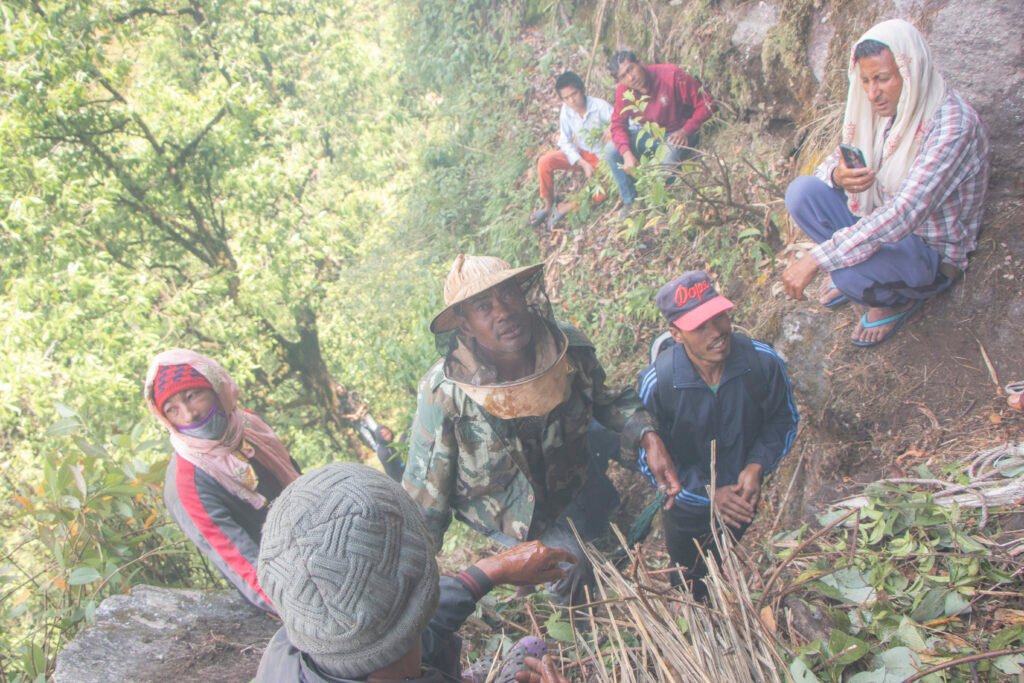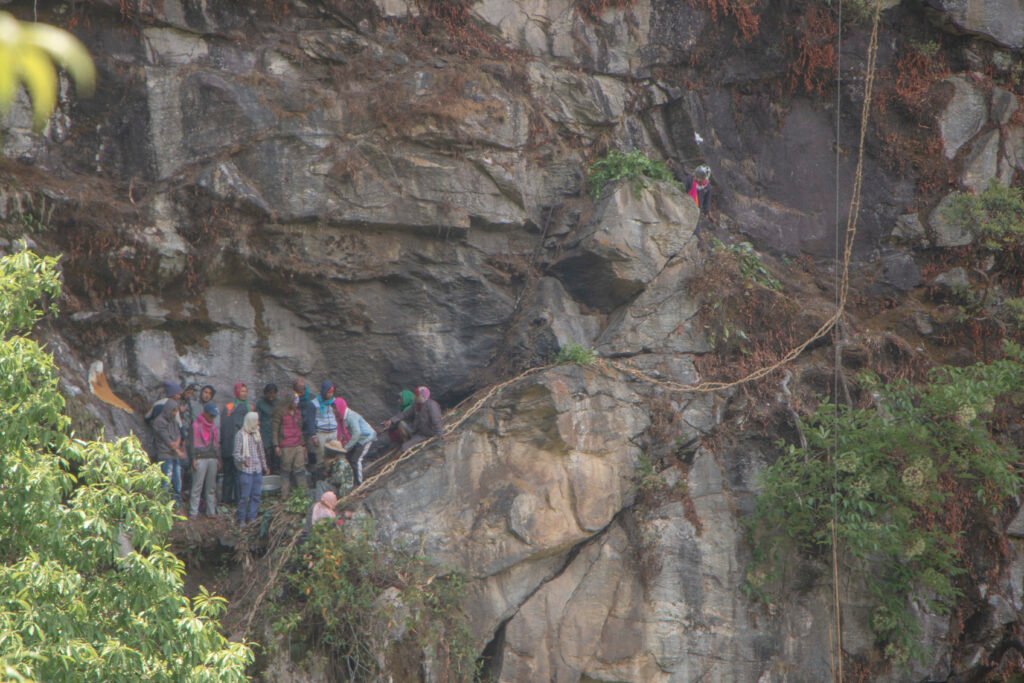(Photo: File, GSM News )
Kathmandu, Nepal 1 July 2025 – Manoj Bohara, Asia Desk, GSM News:
Mad honey collecting has always been a tradition in the vertical cliffs of the mid-hills of Nepal including Lamjung, Kaski, Gorkha, Dhading, Sindhupalchok, Dolakha and Solukhumbu, where that age-old practice continues in unchallenged terms with modernity. This strange type of honey is harvested from the combs of Apis laboriosa, the largest honeybee in the world, and it is very popular for its medicinal and hallucinogenic properties. Mad honey gives a very smooth hallucinogenic effect when small amounts are taken, alongside low blood pressure and mild sleep, but it can also cause dizziness, some nausea or heart problems when consumed in large amounts.
While many around the world are familiar with the tales of the honey hunters who put their lives on the line in Nepal to accomplish tasks that seem impossible, too few are the tales that delve deeper into various cultural and socio-economic dimensions of the practice. Well, that happened in 2020, during the worldwide lockdown of the pandemic; I was in my village called Piskar, Sindhupalchok. In these very cliff regions of the Himalayas, with a waterfall cascading beside a vertical rock face, deep in the hills, I was lucky enough to have been there to witness the practice of mad honey hunting. The descent was done using just handmade bamboo ladders and ropes guided by intuition, ancestral knowledge, and incantations whispered to the bees.
In December 2020, I headed to the village of Changkhu in Dolakha, where another harvest was supposed to happen. It was almost the same process but with a local color touch.

(Photo: File, GSM News )
Living Tradition at Risk
The harvest is not just a bravado adventure. Over decades, it has been a religious practice for people in these areas. It is but a traditional task performed by selected men within the community, who are generally senior in age and have previously spent years learning and training. The forest deities are propitiated, and protection and blessings are asked in a number of rituals during this time of calling. This is usually cast into a larger communal narrative, oral tradition, and religious belief.
Nevertheless, it is a tradition that is ever more gradually changing. Traditionally, with the advent of modernization, fewer people had themselves engaged in such traditional harvesting. Education and urban migration of younger generations, nowadays, have been rising. The fall and stings or days for walking present risks that don’t attract too many. Some quiet pride is carried by a few, except for the old harvesters, who see themselves as the guardians of a dying art.
Even the mad honey has its own international market. It is said to be trippy, make the head light, cause hallucinations, and even intoxication, and that is why it fetches high value in the market from alternative medicine practitioners, psychonauts, and collectors.
Demands have both helped and hurt local communities. It provides a source of income that is very much needed in places where prospects are limited. Once more, though, this same factor engenders pressures for over-harvesting, which impinges on sensitive bee populations and ecosystems.

(Photo: File, GSM News )
The Socio-Economic Realities
The mad honey represents a seasonal livelihood supplement. There are harvests when one harvest can fetch hundreds of thousands of Nepalese rupees. But, the value chain is far from equitable. Honey is mystified by urban traders and middlemen at low prices, only to have it sold at huge premiums overseas.
The poor access to local cooperatives or formal markets continues to impact them badly, having to depend on middlemen to sell their honey. The community did not, in any way, get satisfaction from, or approve of, the initiatives. However, over the years, tour operators and ethnobotanical researchers have shown more interest, with no local inclusion in the process or approval of any initiative. The community is concerned that while outsiders get recognition and payments, the custodians themselves remain economically marginalized.
What the Future Holds
The prospects of sustainable mad honey harvesting are inextricably linked with the fate not only of the bee itself but also the forest in which it resides. The ecological setting of working and its laboriosa within the high cliffs is under threat due to climate change, deforestation, and savage wild over-exploitation. Some conservation steps have been taken into the communities in Dolakha and Sindhupalchok districts—local models of controlled harvest quotas, eco-tourism initiatives, and raising awareness among the young.
There is no doubt that mad honey constitutes more than just a rare special item − it is a culturo, lifesmile, a living tradition binding man to land and memory. Modernization comes; questions are not for how to hold practices, only for how protected holders can benefit in the future.





